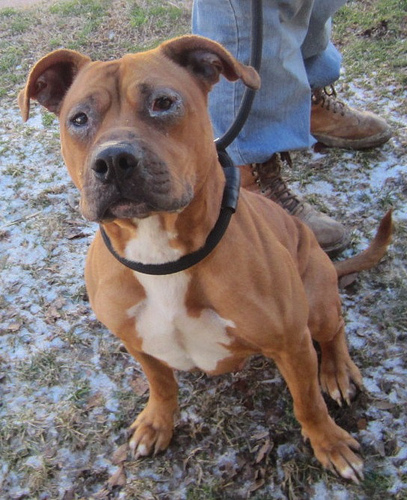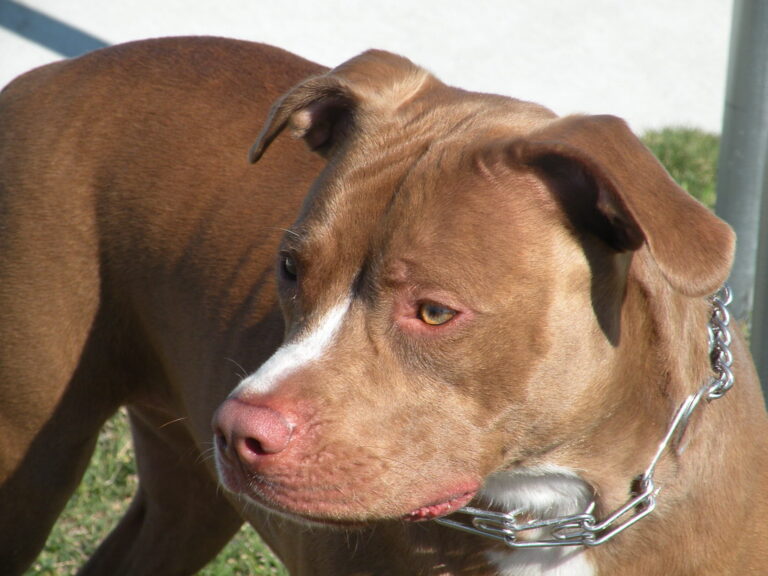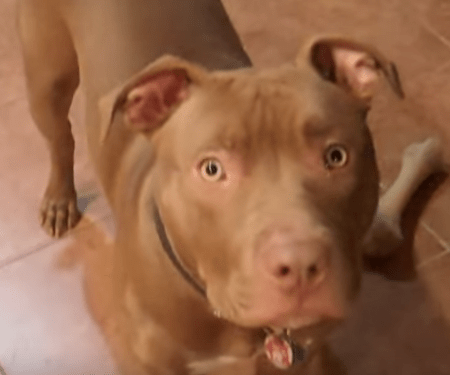
Protecting Your Pit Bull’s Peepers: A Comprehensive Guide to Dog Eye Infections As a pit bull owner, you know how expressive and soulful your dog’s eyes can be. Those big, beautiful eyes are not just windows to their loyal hearts; they’re also delicate organs that require proper care and attention. Eye infections in dogs, including pit bulls, are a common health issue that can cause discomfort and potentially lead to more serious problems if left untreated. In this comprehensive guide, we’ll explore the causes, symptoms, treatments, and prevention strategies for dog eye infections, with a special focus on pit bulls. We’ll also provide you with valuable tips to keep your furry friend’s eyes healthy and bright.
Understanding Dog Eye Infections
Eye infections in dogs, including pit bulls, can affect various parts of the eye, including the conjunctiva, cornea, and eyelids. The most common type of eye infection in dogs is conjunctivitis, also known as “pink eye.” This condition involves inflammation of the conjunctiva, the thin membrane that covers the white part of the eye and lines the inner surface of the eyelid.
Common Causes of Eye Infections in Pit Bulls
Several factors can contribute to eye infections in pit bulls and other dog breeds:
- Bacterial infections: These can be primary or secondary to other eye conditions.
- Viral infections: Canine distemper virus and canine herpesvirus are common culprits.
- Allergies: Environmental allergens like pollen, dust, or mold can cause allergic conjunctivitis. More on dog allergies here.
- Trauma or injury: Scratches or foreign objects in the eye can lead to infections.
- Tear duct problems: Some breeds, including pit bulls, may be prone to tear duct issues.
- Eyelid abnormalities: Conditions like entropion (inward-turning eyelids) or ectropion (outward-turning eyelids) can cause irritation and secondary infections.
- Dry eye (Keratoconjunctivitis sicca): This condition can make the eyes more susceptible to infections.
Is your pit bull showing signs of an eye infection? Don’t wait until it gets worse. Protect your furry friend with pet insurance to cover unexpected vet visits and treatments.
Recognizing the Symptoms of Eye Infections in Pit Bulls
Early detection is crucial for effective treatment of eye infections in pit bulls. Watch out for these common signs:
- Redness and inflammation of the eye or surrounding area
- Excessive tearing or watery eyes
- Yellow or green discharge from the eye
- Squinting or blinking more than usual
- Pawing at the eye or rubbing the face on surfaces
- Swelling of the eyelids
- Cloudiness or change in eye color
- Light sensitivity
If you notice any of these symptoms in your pit bull, it’s essential to consult with a veterinarian promptly.
Treating Eye Infections in Pit Bulls
The treatment for eye infections in pit bulls depends on the underlying cause. Your veterinarian will perform a thorough examination to determine the appropriate course of action. Common treatments include:
- Antibiotic eye drops or ointments for bacterial infections
- Antiviral medications for viral infections
- Anti-inflammatory eye drops for allergic reactions
- Artificial tears or lubricating eye drops for dry eye conditions
- Surgical intervention for eyelid abnormalities or tear duct problems
Need reliable eye care products for your pit bull? Check out our recommended selection of vet-approved eye drops and ointments. [Insert affiliate link to eye care products] It’s crucial to follow your veterinarian’s instructions carefully when administering eye medications to your pit bull. Here are some tips for applying eye drops or ointments:
- Wash your hands thoroughly before and after treatment.
- Gently clean any discharge from your pit bull’s eyes with eye wash pads.
- Hold your dog’s head steady and tilt it slightly upward.
- Pull down the lower eyelid to create a small pocket.
- Apply the prescribed amount of medication into the pocket without touching the eye or eyelid with the applicator.
- Allow your pit bull to blink to distribute the medication.
- Reward your dog with praise and treats to make the experience positive.
Preventing Eye Infections in Pit Bulls
While not all eye infections can be prevented, there are several steps you can take to reduce the risk for your pit bull:
- Regular eye cleaning: Gently wipe your pit bull’s eyes with a clean, damp cloth to remove any debris or discharge.
- Proper grooming: Keep the hair around your dog’s eyes trimmed to prevent irritation.
- Protect during baths: Use a tear-free shampoo and avoid getting soap or water in your pit bull’s eyes during baths.
- Environmental awareness: Minimize exposure to irritants like smoke, dust, or strong chemicals.
- Regular check-ups: Schedule routine veterinary examinations to catch any eye issues early.
- Balanced nutrition: Provide a healthy diet rich in vitamins A, C, and E to support eye health.
- UV protection: Consider dog-specific sunglasses for pit bulls who spend a lot of time outdoors.
Want to boost your pit bull’s eye health? Try this specially formulated eye health supplement for dogs.
When to Seek Veterinary Care
While minor eye irritations may resolve on their own, it’s important to know when to seek professional help for your pit bull’s eye issues. Contact your veterinarian immediately if:
- Symptoms persist for more than 24-48 hours
- Your pit bull is in obvious pain or discomfort
- There’s a significant change in eye appearance or vision
- You notice any trauma or injury to the eye
- The eye infection is accompanied by other symptoms like fever or lethargy
Remember, early intervention is key to preventing more serious eye problems in your pit bull.
The Importance of Pet Insurance for Pit Bulls
As a responsible pit bull owner, you want to ensure your furry friend receives the best possible care. However, veterinary treatments for eye infections and other health issues can be costly. That’s where pet insurance comes in. Pet insurance can help cover the expenses of unexpected vet visits, diagnostic tests, and treatments for conditions like eye infections. With the right coverage, you can make decisions about your pit bull’s health based on what’s best for them, not what you can afford at the moment.
Protect your pit bull and your wallet: Explore our recommended pet insurance plans tailored for pit bulls and other breeds prone to eye issues. No obligation. Enter your email to receive a quote.
Conclusion: Keeping Your Pit Bull’s Eyes Healthy and Bright
Eye infections in pit bulls can be uncomfortable and potentially serious, but with proper care and attention, you can help keep your furry friend’s eyes healthy and bright. By understanding the causes, recognizing the symptoms, and taking preventive measures, you’ll be well-equipped to handle any eye issues that may arise. Remember, your pit bull relies on you for their health and well-being. Regular check-ups, a healthy lifestyle, and prompt attention to any eye problems will go a long way in ensuring your loyal companion enjoys clear, comfortable vision for years to come. Don’t let eye infections cloud your pit bull’s view of the world. Take action today to protect those expressive eyes and keep them shining with health and happiness.
Ready to give your pit bull the gift of optimal eye health? Explore our curated selection of eye care products, supplements, and pet insurance options to keep your furry friend’s peepers in perfect condition.





